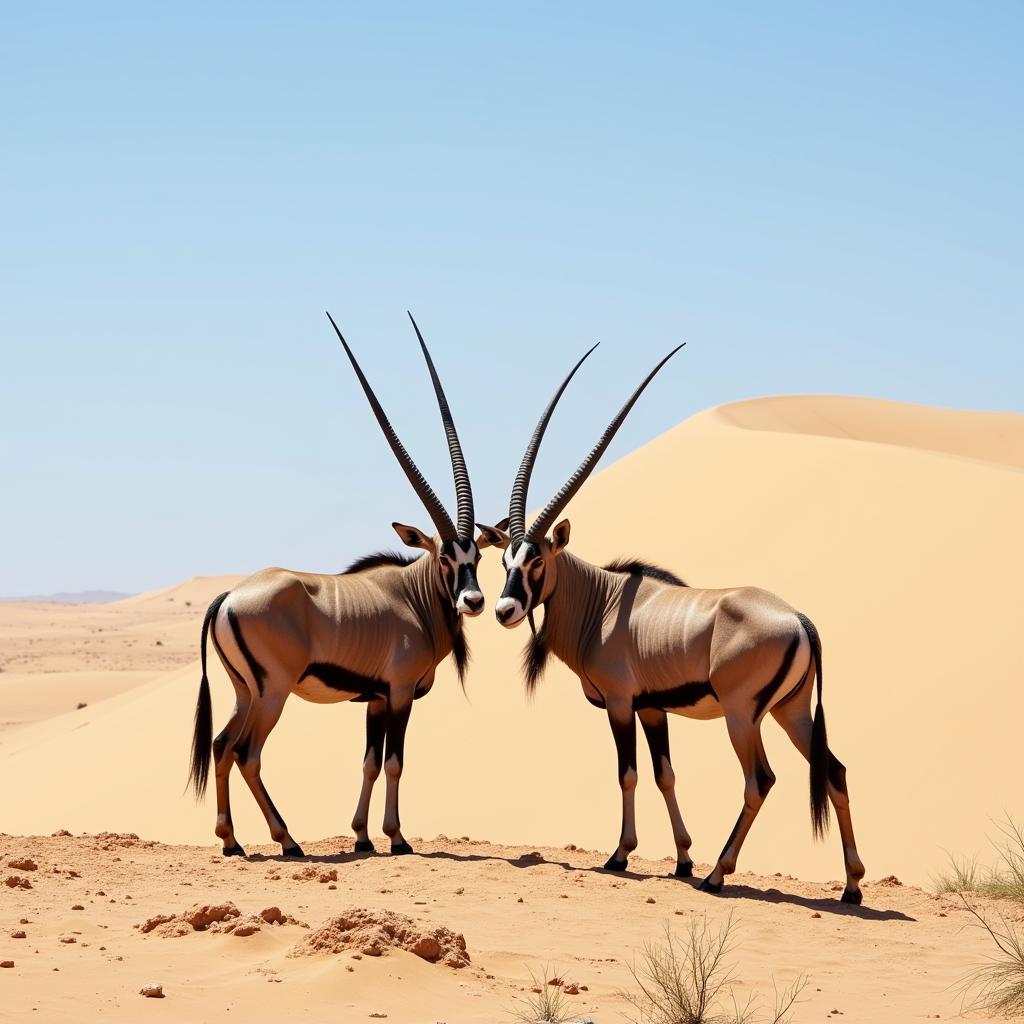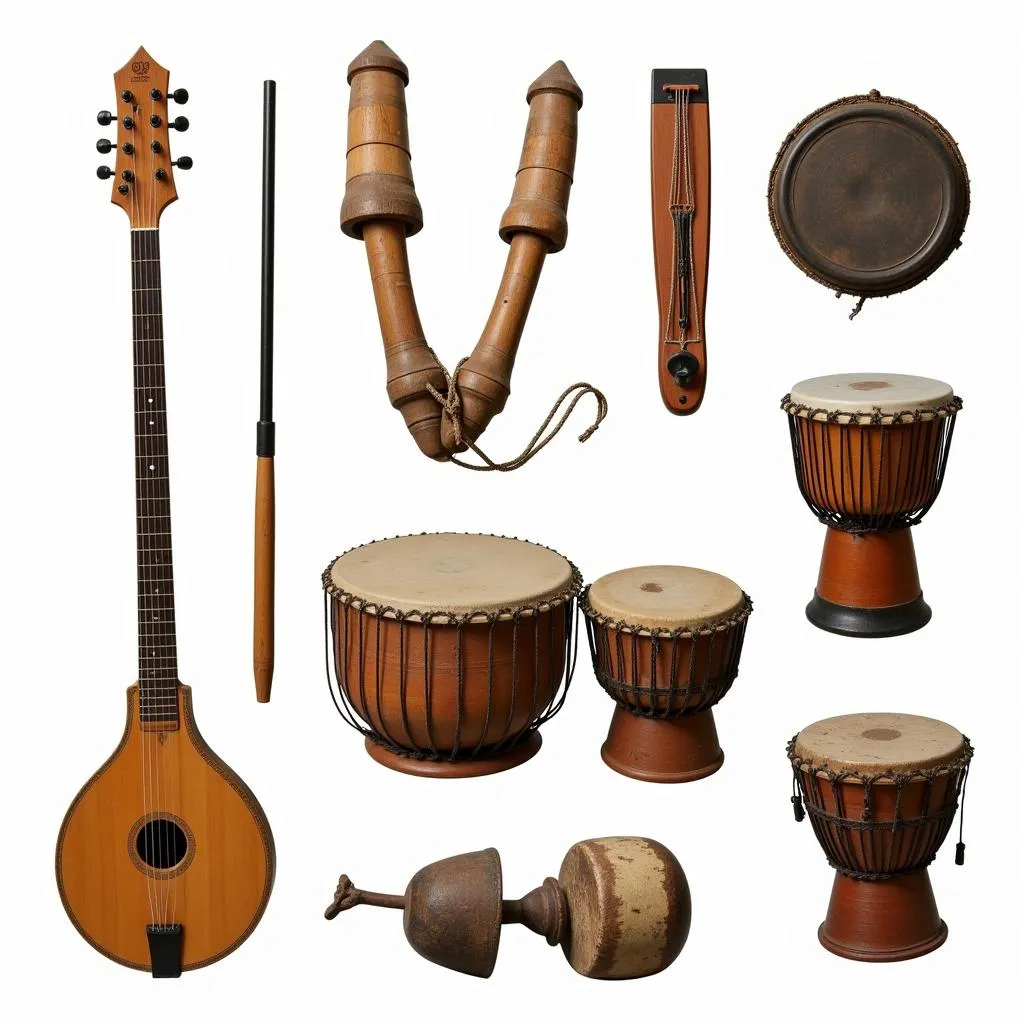African Deer with Straight Horns: A Closer Look
African Deer With Straight Horns evoke a sense of mystique and wonder. These majestic creatures, often confused with antelopes, captivate us with their elegance and grace. While the term “deer” might bring to mind images of branching antlers, certain African antelope species sport horns that are strikingly straight. This exploration delves into the world of these fascinating animals, uncovering their unique characteristics, habitats, and the challenges they face.
Unveiling the “Straight-Horned Deer” of Africa
It’s important to clarify that the term “African deer with straight horns” is a bit of a misnomer. True deer, belonging to the Cervidae family, are not native to Africa. The animals we often associate with this description are actually antelopes, members of the Bovidae family. However, the term persists, highlighting the similar ecological niches deer and some antelope species fill.
So, which African antelopes boast these impressive straight horns? Let’s meet a few:
- Oryx: Perhaps the most iconic of the “straight-horned deer,” oryx species like the Gemsbok and Scimitar Oryx are renowned for their long, rapier-like horns. These horns, present in both males and females, are formidable weapons for defense and establishing dominance.
- Beisa Oryx: This critically endangered oryx subspecies, found in the Horn of Africa, also possesses impressive straight horns.
- Addax: Once widespread in the Sahara Desert, the critically endangered Addax is instantly recognizable by its long, spiraled horns. Although not perfectly straight, the impressive length and gentle curves of the Addax’s horns earn it a place among our “straight-horned deer.”
 Oryx in a Desert Landscape
Oryx in a Desert Landscape
Why Straight Horns? Adapting for Survival
The straight horns of these African antelopes are not merely for show; they are crucial adaptations honed by evolution for survival in challenging environments.
- Defense against Predators: The long, sharp horns serve as formidable weapons against predators such as lions, leopards, and hyenas.
- Establishing Dominance: Within antelope herds, males engage in dramatic horn-to-horn combat to establish dominance hierarchies and secure mating rights.
- Thermoregulation: Some scientists believe the large surface area of the horns may help with thermoregulation, allowing the antelope to radiate excess heat.
The Plight of African Antelopes: Conservation Concerns
Many African antelope species, including those with straight horns, face an uncertain future. Habitat loss due to human encroachment, climate change, and poaching threaten their populations. Organizations like the African Wildlife Foundation and the Sahara Conservation Fund are working tirelessly to protect these magnificent creatures and their habitats.
Exploring Further: The Diversity of African Wildlife
The “straight-horned deer,” though a misnomer, offer a captivating glimpse into the remarkable diversity of African wildlife. From the vast savannas to the arid deserts, these animals embody resilience and adaptation. To learn more about the fascinating array of African deer with long straight horns and other incredible creatures, delve into our African deer species list and discover the wonders of the African antelope o
Conclusion
The African “deer” with straight horns, though more accurately identified as antelopes, continue to intrigue us. Their majestic appearance and incredible adaptations make them a symbol of the wild beauty and resilience of Africa. As we continue to learn about and appreciate these creatures, we must also recognize the importance of conservation efforts to ensure their survival for generations to come.


